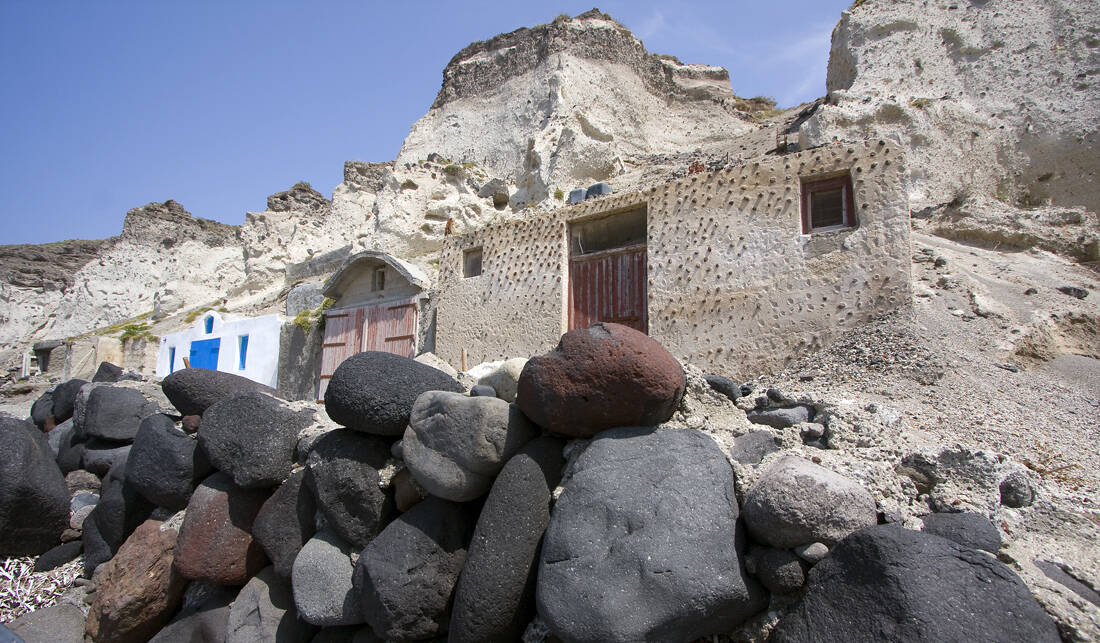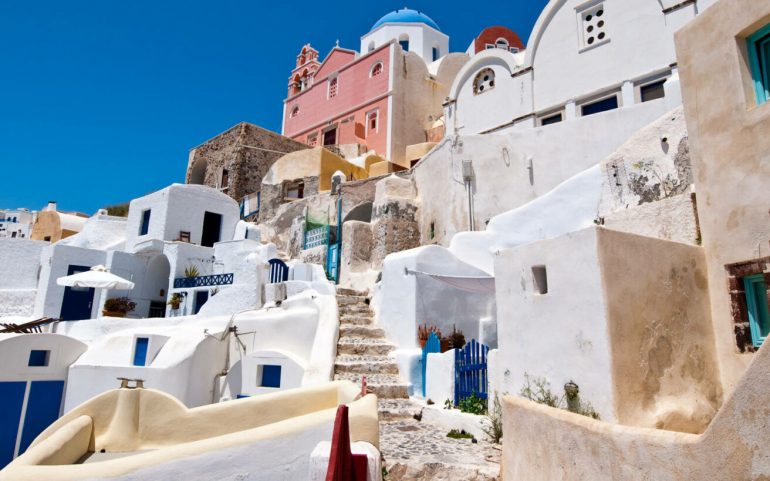If one element characterizes Santorini, apart from its popular and well-traveled sunset and its characteristic and imposing caldera, this is none other than its particularly cave buildings, which are not found anywhere else in Greece.
The small and poor houses of the ship crews, which are the oldest and simplest form of house, today for the beautiful and well-photographed island of Cyclades, are not only a point of reference but one could say one of its most special attractions.
The most characteristic, traditional buildings of the island -today they are found in various forms, houses, churches, warehouses, canopies, hotels, etc.-, despite their anarchic architecture add a unique beauty to the famous Cycladic island, making it unique in the world.
Looking like they are hanging on the edge of the caldera cliff, it is not uncommon for their neighborhood to be so close, with volumes penetrating each other, with public and private spaces sometimes connected or even identical, creating an unprecedented "knitting. Considering the morphological peculiarities of the island, the landscape you can see is truly amazing.

Although today most of them create the feeling of unbridled luxury and opulence, as there are many five-star hotels on the island that are hosted in them or deliberately follow this architecture, the fact that the caves of Santorini were considered small and poor houses, where the ship's crews lived as well as the poor families of the island, in contrast to the built captain's houses, is impressive.
In essence, this is the oldest and simplest form of house, as they were cave dwellings without any foundations. The reason for their creation? According to tradition he is none other than the stubbornness for survival against the slope of the rock. Their shape was narrow and long, while they were carved in the Thera land and were characterized by their vaulted ceilings and narrow facade. Some of them were carved entirely in the ground, while others had additional built parts. One of their most important advantages - which characterizes them to this day - is the fact that during the winter they are kept warm and during the summer cool, due to the insulating properties of the Thera land.

The traditional caves of Santorini usually consisted of two rooms, with the front including the hall and the kitchen and the back the bedroom, the arch, which was separated from the rest. home with a built wall. They were illuminated and ventilated by the door and the two windows on either side of it, as well as by the skylight just above it. The inner wall that separated the house in its two spaces had exactly the same openings in order for the arch to be lit and ventilated.
The kitchen was sometimes located inside and sometimes outside the cave, while the place where they cooked was called a firebox. In essence, these were two large stones between which they placed wood, lit a fire and placed the cauldron on top. The toilet or rehearsal, for the most part, was located in a different room outside and was usually elevated.
To collect the water, they used the cistern, which collected the rainwater that fell on the roof or in the yard of the house, and through the gutters was led to the cistern. A bunch of small tied sticks were used as a filter, which they placed in the gutters.
When the rock allowed it, in the courtyards of the caves there was a small flowerbed, the alitana, where the inhabitants planted various herbs, herbs and flowers. Among the most interesting points of the caves are also the built-in furniture, the carved recesses, the stairs, the ovens, the chimneys as well as the flower beds in the courtyards.

Apart from the much photographed and busy Oia and Fira, with the caves along the caldera, the image of which travels every year to the ends of the world, caves can be found in other parts of the island.
Vothonas and Karterados in the interior of the island and Finikia in its northern part are three of these points, as the urban development follows the streams of the torrents, on the walls of which the houses have been dug. Still, dig cavernous Houses can be found in the medieval settlements of Pyrgos and Emporio in the interior of Santorini, as well as in Akrotiri on its south side.
What is worth noting, however, about the caves is the fact that the areas that today, due to their view and their location right on the cliff cliff, are of greater value, used to be more popular options for the poorer social classes of the island. , with lords and captains preferring to build, rather than caves, houses both at the top of Oia and in northern Fira.
